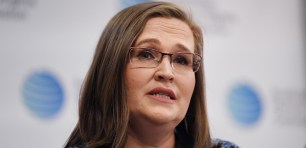
Source: Women's Agenda
Breaking down entrenched gender norms in Australia could unlock $128 billion per year in the economy and 461,000 additional full-time employees.
The figures come from a new report launched by Deloitte Access Economics and Australians Investing in Women, which found gender norms — which incentivise people to behave in stereotypical ways — underpin all the existing gender gaps in Australia.
Modelling for the report found that letting go of prescriptive gender norms would grow the economy by $47 billion by 2040 and $163 billion by 2050. Over the next 50 years, the benefits would continue to grow, reaching $515 billion. This would mean $128 billion more in GDP every year, on average.
The report, Breaking the Norm: Unleashing Australia’s Economic Potential, says it can be achieved by getting more women to participate in the labour force, with women working more paid hours and men taking on an equal share of unpaid labour and care. More people working in roles that align with their skills, talents and qualifications would also contribute.
“These benefits are really the floor, not the ceiling, for what we can achieve by breaking gender norms,” said Sruthi Srikanthan, Deloitte Access Economics partner.
The report includes figures that show nearly one-third of Australian men don’t really believe gender inequality exists, more than the global average. And 28% of men believe women often exaggerate or make up claims of abuse or rape.
Meanwhile, research shows younger generations of men (gen Z) are just as, if not more traditional, than older generations (millennials and gen X).
“When nearly a third of men don’t believe in gender inequality, even though gender gaps persist in nearly every aspect of our home, work and political life, our gender problem is much bigger than each individual gender gap,” Srikanthan said.
“Our way of thinking has normalised differences between men and women to the point that we don’t just accept gender gaps, but we expect them.
“The way that Australia has aimed to tackle gender inequality has historically looked at different outcomes of gender norms, like the costs of childcare, the structure of paid parental leave, or discriminatory hiring practices.
“What this report shows is that without looking at the common source of these gender gaps, each action only plugs a leak that springs up elsewhere. We need to turn the tap off.”
The report also highlights the power of philanthropy in helping to close gender gaps, with Australians Investing in Women CEO Julie Reilly issuing a call to action to philanthropists.
“Philanthropy often provides the risk capital necessary to drive social change, and there is an incredible opportunity for corporate, private and institutional funders to take a lead on breaking gender norms,” Reilly said.
“At the moment, just 12% of philanthropic funding targets the needs of women and girls. For philanthropists wanting to make a difference across the economy, accelerating progress towards gender equality is the ultimate impact investment.
“It’s a $128 billion opportunity that could help create 461,000 full-time workers at a time of crippling labour and skills shortages.”
This article was first published by Women’s Agenda.
Handpicked for you

Respect@Work website provides “one-stop-shop” for businesses on how to stamp out sexual harassment



COMMENTS
SmartCompany is committed to hosting lively discussions. Help us keep the conversation useful, interesting and welcoming. We aim to publish comments quickly in the interest of promoting robust conversation, but we’re a small team and we deploy filters to protect against legal risk. Occasionally your comment may be held up while it is being reviewed, but we’re working as fast as we can to keep the conversation rolling.
The SmartCompany comment section is members-only content. Please subscribe to leave a comment.
The SmartCompany comment section is members-only content. Please login to leave a comment.